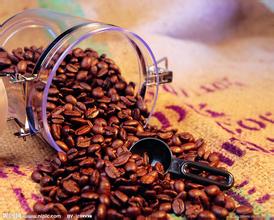Flavor description of Yunnan Tieka Coffee beans introduction to the characteristics and quality of the manor area
Flavor description of Yunnan Tieka Coffee beans introduction to the characteristics and quality of the manor area
So when Nestl é succeeded in promoting high-yield new varieties in Pu'er in the 1990s, brown farmers in Baoshan area also cut down old varieties and changed them to new ones. With a round of coffee expansion, new varieties are increasing and old varieties are decreasing day by day. Finally, today's situation: the old varieties have almost been cut down, and the little ones that survived are all "old, weak, sick and disabled". Most of the trees are more than 20 years old. Over time, the yield and quality are much lower than the so-called new variety actually refers to catimor (Katimo), which is a hybrid of timor and Arabica from the Roberta family. Compared with the old variety, it lacks rich aroma and taste, and has a relatively shallow smell of grass and soil, but its advantages are pest resistance, easy management and high yield, and its yield per mu is up to 350kg. More than twice as much as the old breed. Of course, if it is used to make instant coffee or general commercial beans, high-yield catimor is a good choice, but if you want to look for Yunnan specialty coffee, then the old variety of iron pickup has become the first choice because of its congenital excellent genes. Therefore, this trip to Yunnan also followed the trail of the old varieties. But the reality is really cruel. Before going, Brother Zou told me that there was an old variety in his relative's house, but what he saw excitedly was a crazy growing coffee forest, which belonged to his aunt because his aunt was not old enough to plant and renovate-- so these old varieties survived, but the aunt was unable to manage it alone, so he left the tree to grow naturally and pick some fruit when it matured to trace its roots. Typica, which originated from Ethiopia, is the earliest original species of coffee. Bourbon is a variety of typica. Both of them have rich aroma and excellent taste performance, and they also belong to very high quality varieties in Arabica. It is said that the coffee tree species that was first introduced into Zhukula in Yunnan is typica. When coffee was planted on a large scale in Baoshan area in the 1950s, it was also typica and bourbon. But the problem is that although these two varieties are excellent in taste, they are not resistant to diseases and insect pests, are prone to leaf rust, and the yield per mu is relatively low, so corresponding to this, there is a "new variety" to mention Yunnan coffee. Perhaps the most common word we hear is "Yunnan small grain coffee", and most of them will say "Yunnan small grain coffee-fragrant but not bitter, strong but not strong." Therefore, many people classify the varieties of Yunnan coffee as "small seed species", and the evaluation of the taste of Yunnan coffee is naturally "fragrant but not bitter, strong but not strong". Regardless of whether it is correct or not, there is no word "small seed" among the more than 900 named coffee varieties at present, so this "small seed" is not strictly a coffee variety, it is just a nickname given to this variety by the people of Yunnan. In fact, the name of Yunnan "small grain coffee" should be arabica--typica (Arabica-iron pickup) or arabica--bourbon (Arabica-bourbon).

Important Notice :
前街咖啡 FrontStreet Coffee has moved to new addredd:
FrontStreet Coffee Address: 315,Donghua East Road,GuangZhou
Tel:020 38364473
- Prev

Korean Coffee "flameout" Cafe looking for New Hot spot
It is not only Korean coffee that is not optimistic about the development. At the beginning of this year, Diou Coffee, which carries the memories of the post-80s generation in Zhengzhou, closed its Zhenghong flag store on Agricultural Road, and its store on Jingwulu and Wei No.3 Road has also been closed. With the emergence of new coffee, Shangdao Coffee, Genong Coffee and Cross-Strait Coffee, which belong to the same era of Chinese Coffee 1.0, have gradually faded out of consumers' sight. With
- Next

What size coffee cup does cappuccino normally use? how big is the pull flower coffee cup?
What size coffee cup does cappuccino normally use-the appropriate size of espresso espresso must be filled in 60-90 ml coffee cups with handles. These beverage cups must be accurately measured and verified to ensure that they are free of any harmful substances. This includes (but not the only condition): the cup is too hot to hold or unsafe to drink. Otherwise make use of
Related
- Beginners will see the "Coffee pull flower" guide!
- What is the difference between ice blog purified milk and ordinary milk coffee?
- Why is the Philippines the largest producer of crops in Liberia?
- For coffee extraction, should the fine powder be retained?
- How does extracted espresso fill pressed powder? How much strength does it take to press the powder?
- How to make jasmine cold extract coffee? Is the jasmine + latte good?
- Will this little toy really make the coffee taste better? How does Lily Drip affect coffee extraction?
- Will the action of slapping the filter cup also affect coffee extraction?
- What's the difference between powder-to-water ratio and powder-to-liquid ratio?
- What is the Ethiopian local species? What does it have to do with Heirloom native species?

